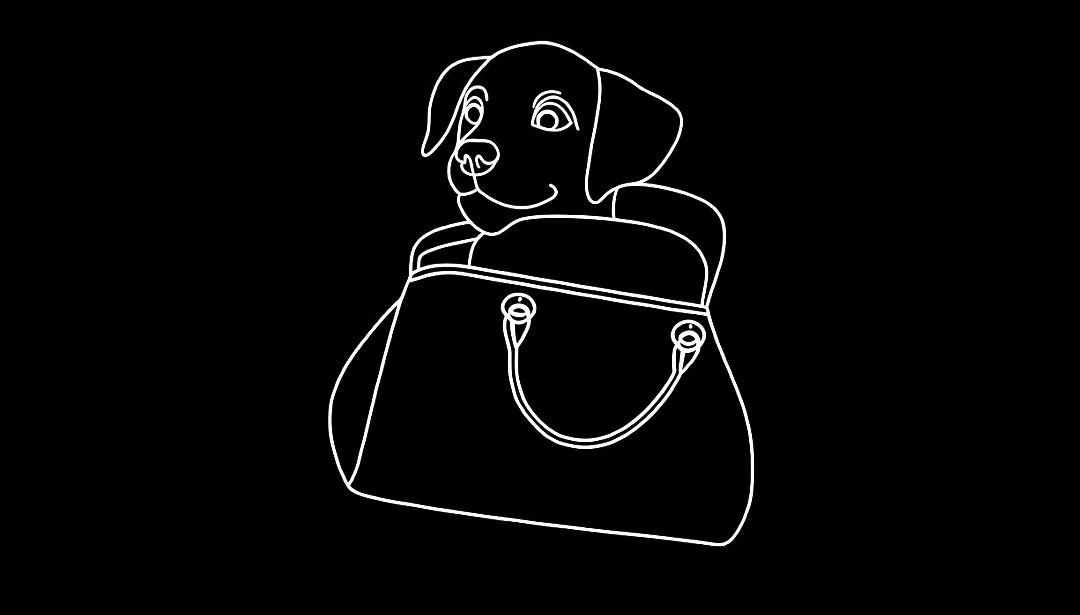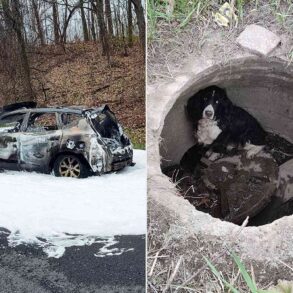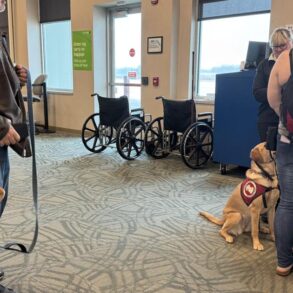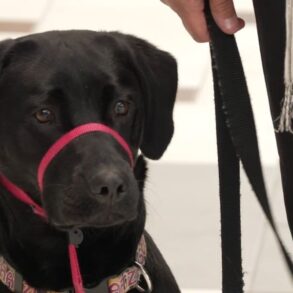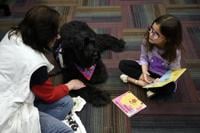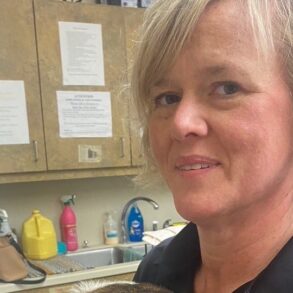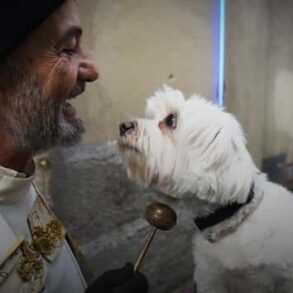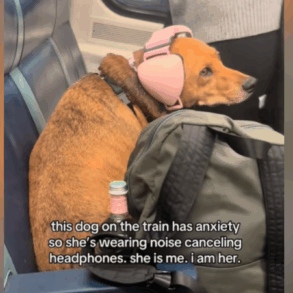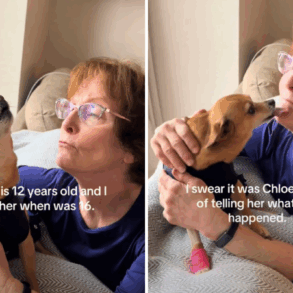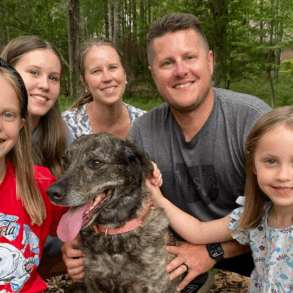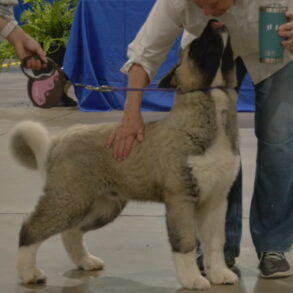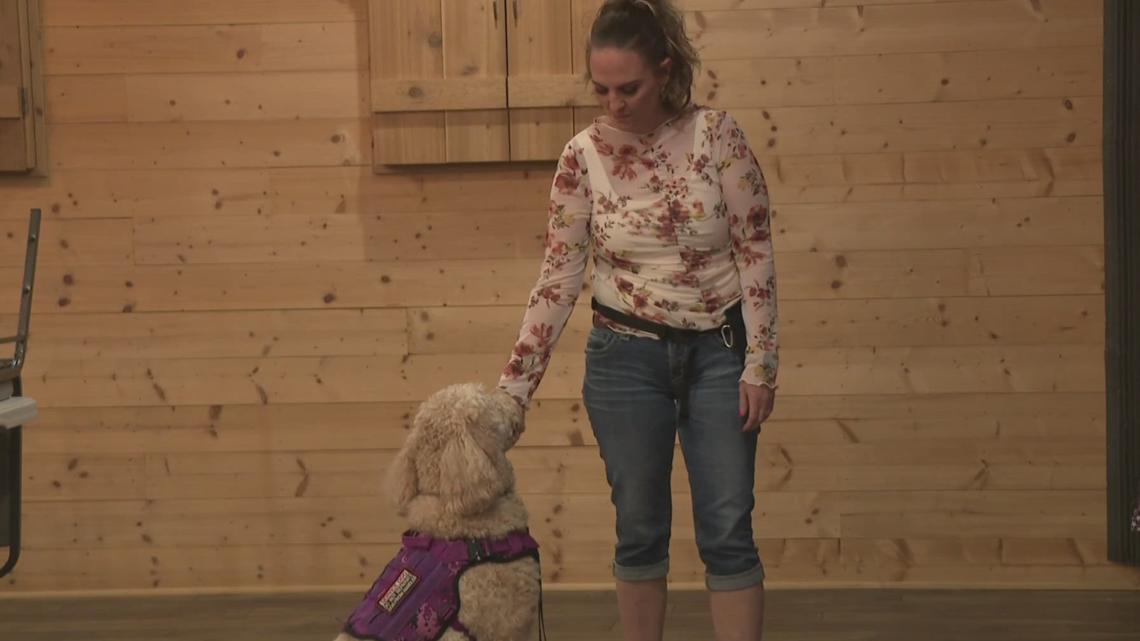
“They know when they’re out with their ‘battle buddy’ that things are going to be better. It’s not a cure all, it’s not a fix all, but neither are the medications.”
FAYETTEVILLE, Arkansas — Whether guiding the visually impaired, detecting seizures before they happen, or calming a veteran with a medical diagnosis, these four-legged heroes are doing it all.
For many veterans returning home from combat, the fight doesn’t end on the battlefield. Physical injuries, post-traumatic stress disorder (PTSD), anxiety, and depression can make civilian life feel like unfamiliar territory. But for a growing number of former service members, help comes on four legs — with a wagging tail and an unwavering devotion.
Service dogs are becoming an essential part of recovery and reintegration for veterans across the country.
For 18 years, April Nolan served on the frontlines in the army doing medical supply. 10 years ago, she medically retired and went through years of intensive therapy. But still, day to day life is hard for her.
“I think the biggest thing for me was the ability to be able to go to my son’s soccer games because I was missing things for my kids because, you know, the stress and anxiety and things were just way too much to be in public.”
Nolan’s service dog, Daphne, is trained to recognize certain cues of social anxiety. She says as a veteran, big crowds are intimidating.
“I have trained her to be able to either come between my legs or on the sides, behind or in front of me, to create that space for me,” Nolan said. “And then I’ve also taught her grounding to where, if I’m kind of getting elevated, she will come and ground. I made it to where she alerts me when my irritability and my anxiety is getting too high, the minute that I realize she is sitting here, cheesing and her tail is wagging, she’s up in my face. She’s letting me know that I’m getting elevated, and I’m like, oh, I need to check myself here.”
This all came through the help of local organization “Service Dogs of Distinction,” which is known for helping veterans and training service dogs through positive reinforcement training. Before Daphne, Nolan said her husband was her primary caregiver.
“The stress was just so unbearable at times, my husband ended up being my sole caregiver for many, many years, where, like he was the one that had to drive me places. He had to go with me to my appointments, and so me being out in public was not something that I did, so this program, for that reason, I’m able to go back to the grocery store,” Nolan recalled.
Don Gardner is president and lead trainer of the organization and explained their process.
“For training for specific medical assistance needs, we hope to capture an offering that the dog gives us. We set up the scenario in favor of them being successful. For instance, sometimes for anxiety, the knee bounce or hand twitch and hand rubbing goes along with that,” Gardner explained. “We can encourage the dog to notice the knee bounce, encourage them by with a lure to get over, put their head on the knee, hold it down until the knee stops bouncing. Then they get the reward.”
Gardner said that behavior is then captured and practiced. He said the program usually lasts up to a year.
“Our program is generally 12 to sometimes 15 months long by the time we get the foundation skills on the prospect dogs. Bring the veterans in for preparing. Everybody meets and greets and the training starts. Then we ask the veterans, they attend weekly training sessions like today, they train for up to 12 months. Some get out a little sooner, depending on the dog and the veteran. Some pairings are a little quicker. Some last a little longer, but on average, right at 12 months,” Gardner said.
Not too long after, the service dogs start making a difference on the veteran lives.
“We know when a veteran tells us after training that, you know, my first thought this morning wasn’t suicide, my first thought was, I’ve got to take my dog out to pee. That lets you know you’re changing through the dog. The thought process is changing, just the battle buddy aspect of it,” Gardner said.
“It’s not a cure all, it’s not a fix all, but neither are the medications that you know, the VA (Veteran affairs) dumps out, this is actually, we believe, more of an assistance in the healing process for the PTSD and potentially some of the TBI symptoms, instead of just masking it with medication, we’ve actually got a living, breathing, warm, blooded mammal there to assist in the healing process,” Gardner added.
One thing to know about service dogs is that even though they’re heavily trained, you can’t just go up and start petting.
Shamthi Steddum, the owner of “School of Dogs” in Fayetteville, explained that there are different categories of working dogs.
“An emotional support animal is also providing a service for a diagnosed psychiatric scenario for the owner, but it’s in the home environment, so those dogs do not have public access. As for a therapy dog, they can navigate going through Lowe’s, going through the farmers market, they don’t bat an eye, they’re just super laid back, but their job is for everybody else,” Steddum said. “A service dog is a dog who has 100% public access with their owner, not just anybody else, but with their owner, because they provide a very specific service to their owner.”
Nolan and Daphne have been paired together for the last three years, and she said she still has to explain to people in public why they can’t pet her dog.
Nolan said her husband compares the analogy of “Would you mess with someone else’s medical device, like their insulin monitor or their pacemaker or their blood pressure machine?”
“It’s a medical device. You don’t really mess with it. She’s my medical device. And so, it’s like, just act as if she’s not even here. She’s a medical device and a lot of times that seems to go over a little bit better with the adults understanding making that connection,” Nolan explained.
Steddum said she’s noticed an influx of people abusing the system of having a certified service dog, but their dogs are not well behaved in public spaces.
“It is disruptive in public environments and things like that, and that really does make it really difficult. Like a friend of mine just got kicked out of an environment with her certified service dog. This dog has been trained from a puppy; I helped train it. The dog is amazing, and because there are so many people going out in public with dogs that are not trained and are not capable of handling public environments.”
For public entities, Steddum said there are a few ways to determine if someone’s service dog is properly trained.
“I want to know that the dog only has eyes for their owner,” Steddum said. “They’re not sniffing the environment; they’re not barking at people. They’re not being carried. They’re not in the shopping cart. They’re not being carried in a purse. They are working. They are working for their owner and their owner only, and they can go into any environment. You shouldn’t even know the dog is there. So that’s big.”
This post was originally published on this site be sure to check out more of their content.
